Step into the captivating world of the Lucayans, an ancient civilization that once thrived in the idyllic islands of the Bahamas. Delve into their remarkable trade networks, spanning from the bountiful Caribbean to the northern territories, as we unravel the economic impact they wielded centuries ago.
Explore the intricacies of their trade routes, where precious commodities, cultural artifacts, and exotic resources exchanged hands, leaving an indelible mark on the region’s development.
Discover how the Lucayans’ expertise in resource exploitation, diverse economic structures, and vibrant cultural heritage continue to shape the modern-day Bahamian economy. Join us on this historical journey, where the echoes of the past resonate with the thriving present, in an exploration of the Economic Impact of the Lucayans in the Bahamas.
Lucayan Trade Networks
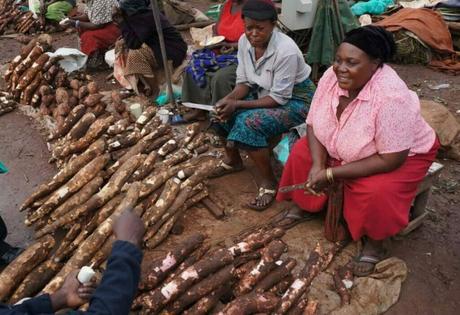
The Lucayans had an impressively extensive trade network that spanned across the islands of the Bahamas and the Greater Antilles. Given their strategic location, they were naturally the ideal middlemen, bridging the trading gap between the resources-rich southern Caribbean islands and the northern territories. Their trading voyages encompassed commodities like shell beads, food products, wooden artifacts, and even religious idols, demonstrating their influence and relevance in the region’s economic sphere.
Moreover, the Lucayans also traded perishable goods, a testament to the efficiency and speed of their trade routes. Transported in their sophisticated dugout canoes, goods such as agricultural produce, fresh fish, and other food supplies were exchanged, implying a substantial amount of economic activity. These networks were not just economic lifelines but also channels of cultural exchange, further solidifying their impact on the region’s development.
The Flourishing Lucayan Trade Networks
The Lucayan trade networks were not limited to commodities and perishable goods. They also facilitated the exchange of valuable natural resources and specialized craftsmanship. Some examples of their trade activities include:
- Salt: The Lucayans had access to salt deposits on various islands in the region. They collected and traded salt, which was a valuable commodity for preserving food and for medicinal purposes. The demand for salt extended beyond the local communities, reaching neighboring islands and even mainland territories.
- Ceremonial Artifacts: The Lucayans were skilled artisans and produced intricate ceremonial artifacts using materials like shells, bones, and wood. These objects held significant cultural and religious importance. They were highly sought after by other indigenous groups in the Caribbean, who would trade for them or use them as inspiration for their own craftsmanship.
- Precious Stones and Minerals: Some islands in the Bahamas and Greater Antilles were rich in natural resources such as precious stones and minerals. The Lucayans would extract these resources and trade them with neighboring islands or mainland societies. Examples of such resources include jadeite, quartz, and various types of colorful stones used for ornamental purposes.
- Exotic Feathers and Animal Products: The Lucayans lived in a diverse ecosystem, which allowed them to trade exotic feathers and animal products. Feathers from vibrant birds like parrots and macaws were highly prized and used for decorative purposes. Animal products such as shells, bones, and hides were also traded and utilized for various purposes like clothing, tools, and ceremonial objects.
- Agricultural Products: The Lucayans cultivated a variety of crops, including maize, cassava, sweet potatoes, and peppers. These agricultural products were essential for sustenance and served as trade items. They were traded both within the Lucayan communities and with other indigenous groups in the region, ensuring a steady supply of diverse food sources.
- Canoes and Navigational Knowledge: The Lucayans were skilled boat builders and navigators. They constructed sophisticated dugout canoes using large tree trunks, which enabled them to travel long distances at sea. Their expertise in boat building and navigation was highly valued, and they would exchange canoes or share their navigational knowledge with other indigenous groups.
The Lucayans’ trade networks were dynamic and interconnected, contributing to the economic growth and cultural exchange in the Caribbean. Through their extensive trade routes, they played a pivotal role in the circulation of goods, ideas, and technologies, fostering connections and influencing the development of various indigenous societies in the region.
Natural Resources Exploitation
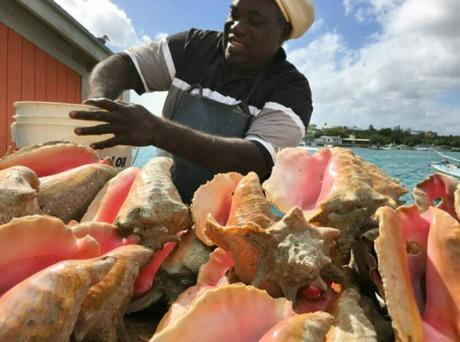
The Bahamas are endowed with a rich variety of natural resources, and the Lucayans proved adept at utilizing them to their advantage. They relied on marine resources, including conch and other shellfish, fish, and turtles, both for sustenance and for trading with neighboring communities. Inland, they utilized palm trees and other flora for construction, food, and the crafting of daily-use items, integrating the exploitation of resources into their livelihoods seamlessly.
Lucayan exploitation of these resources also extended to their craftwork. They produced beautifully crafted pottery and intricately designed wooden artifacts that were traded throughout their networks. These goods, made from locally sourced materials, held not only economic value but also cultural and artistic significance, underpinning the intertwined nature of their economic and socio-cultural structures.
Economic Structures
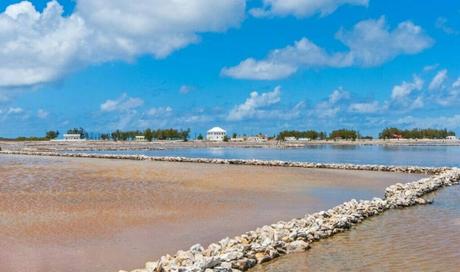
The Lucayan economic structure was a complex system that incorporated elements of trade, agriculture, and resource exploitation. Despite not using currency as we know it today, their barter-based economy was efficient and ensured a well-distributed access to resources within the community. The economic hierarchy mirrored their societal organization, with tribal leaders playing a significant role in the distribution and management of resources.
The community-based economic structure ensured that no individual within the society was left out from the economic process. Women were involved in pottery and craft-making, while men handled fishing, hunting, and farming duties. Such gender-defined roles allowed the Lucayans to operate a well-organized and diverse economic structure that promoted inclusivity and equity.
- Specialized Trades: The Lucayans engaged in specialized trades within their communities. For example:
- Fishermen traded their catch with farmers for agricultural produce.
- Artisans traded their crafted goods, such as pottery and woven items, for food or other necessary resources.
- Hunters traded game meat and animal pelts with other community members for tools or clothing.
- Agricultural Practices: Agriculture played a crucial role in the Lucayan economy. They cultivated various crops, including maize, beans, squash, and cassava. These crops were grown in small-scale agricultural plots using techniques such as slash-and-burn farming. The surplus food produced through agriculture was shared within the community to ensure everyone’s well-being.
- Resource Exploitation: The Lucayans utilized the rich natural resources available to them on the islands. Examples include:
- Gathering seashells, which were used as tools, decorations, and currency.
- Harvesting salt from salt pans located near the coast, which was used for food preservation and trade.
- Extracting fibers from local plants, such as palm trees, to make ropes, baskets, and other useful items.
- Inter-Island Trade: The Lucayans engaged in trade not only within their own communities but also with other islands in the region. They had well-established trade routes and navigational skills that allowed them to exchange goods and resources with neighboring tribes or settlements. Trade items included seashells, pottery, food, tools, and unique cultural artifacts.
- Redistribution and Leadership: The tribal leaders played a crucial role in the economic structure of the Lucayans. They oversaw the redistribution of resources and ensured a fair distribution within the community. They also managed trade relationships with other tribes or groups, fostering economic ties and maintaining social cohesion.
- Inclusive Gender Roles: The Lucayans had distinct gender-defined roles within their economic structure. These roles contributed to the overall functionality and diversity of their society. Examples include:
- Women were involved in pottery-making, crafting items, and gathering resources such as seashells and fibers.
- Men took on responsibilities like fishing, hunting, and farming, ensuring a steady supply of food and raw materials for the community.
These various elements of the Lucayan economic structure demonstrated their adaptability, resourcefulness, and collaborative approach to managing their resources and promoting an inclusive and equitable society.
Influence on Bahamian Economy

The economic imprint of the Lucayans can still be observed in modern-day Bahamian economy.
The Bahamas continues to rely heavily on marine resources, which form a significant portion of its exports and domestic food supply. The rich tradition of craft making, inspired by the Lucayans, also fuels a burgeoning artisan industry, catering both to local and tourist demand.
The spirit of community and shared responsibility in economic activities, a hallmark of the Lucayan economic structure, persists in the Bahamian economic fabric. Local businesses are often family-owned and operated, and cooperative economic structures are common, showcasing the enduring influence of the Lucayans on the Bahamian economic mindset.
Present-day Economic Traces
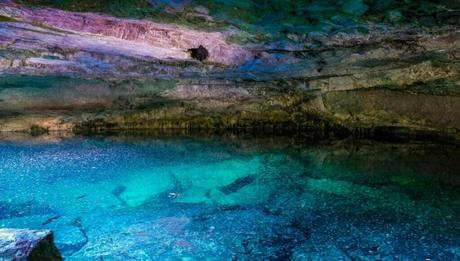
Present-day traces of the Lucayan economic impact can be seen in the Bahamas’ vibrant tourism industry. Sites like the Lucayan National Park draw visitors from around the globe, eager to learn about the rich Lucayan heritage and their historical way of life. The economic value of these sites, both in terms of tourism revenue and cultural preservation, is immeasurable.
Furthermore, traditional Lucayan activities like fishing and craftwork are not just pastimes, but economically significant practices for the Bahamians. The domestic market for these traditional crafts and the export potential of seafood products serve as present-day reminders of the economic legacy of the Lucayans, a legacy that continues to shape the Bahamas’ economic landscape.
Economic Traces of the Lucayans in the Bahamas Today
- Lucayan National Park: The Lucayan National Park, located on Grand Bahama Island, serves as a significant tourist attraction. Visitors can explore the park’s vast system of underwater caves and archaeological sites, providing insights into the Lucayan civilization. The revenue generated from park entrance fees, guided tours, and souvenir sales contributes to the local economy.
- Cultural Tourism: The Lucayan heritage is woven into the fabric of the Bahamas’ cultural tourism offerings. Tourists can engage in immersive experiences, such as traditional craft demonstrations, cultural festivals, and performances that showcase Lucayan influences. These activities create employment opportunities and generate income for local artisans, performers, and businesses.
- Fishing Industry: The Bahamian fishing industry, deeply rooted in the Lucayan tradition, contributes to the country’s economy. Local fishermen employ techniques passed down through generations to catch various seafood species. The catch is not only supplied to domestic markets but also exported to international markets, generating revenue and supporting livelihoods.
- Craftwork and Artisanal Products: The craftsmanship and artistic skills inherited from the Lucayans have thrived in the modern Bahamian society. Local artisans create unique handicrafts, such as straw baskets, wood carvings, and intricate beadwork, which are highly sought after by tourists and collectors. The sale of these traditional crafts provides income for the artisans and contributes to the overall economy.
FAQ
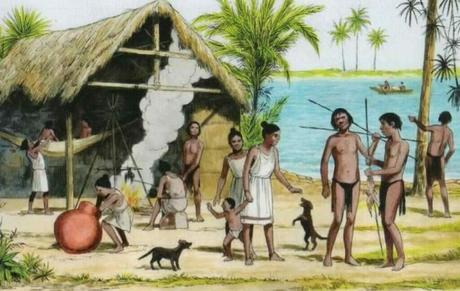
Why is it important that we study the Lucayans?
Studying the Lucayans is important as it offers valuable insights into the pre-Columbian history and indigenous cultures of the Bahamas and the wider Caribbean region. Their knowledge of resource management, trade networks, and social organization provides a deeper understanding of sustainable practices, human adaptation, and the complexities of early societies. Additionally, studying the Lucayans helps acknowledge and preserve the cultural heritage of indigenous communities that have significantly shaped the history of the Americas.
What was the effect for the Lucayans when other Europeans came to the Bahamas and the other Caribbean islands?
The arrival of Europeans in the Bahamas and the Caribbean had devastating effects on the Lucayans. The introduction of diseases, forced labor, violent conflicts, and enslavement resulted in a rapid decline of the Lucayan population. Their communities were decimated, cultural practices were disrupted, and their traditional way of life was disrupted. This encounter with Europeans marked a tragic chapter in the history of the Lucayans and forever altered their existence.
What type of people were the Lucayans?
The Lucayans were indigenous people who inhabited the Bahamas and parts of the Greater Antilles in the Caribbean. They were skilled seafarers and adept at navigating the surrounding islands. The Lucayans had a complex societal structure, with tribal leaders playing significant roles in resource distribution and trade. They engaged in diverse economic activities, such as agriculture, fishing, and craft-making. The Lucayans exhibited resilience, adaptability, and a strong sense of community, which allowed them to thrive in their unique island environment.

